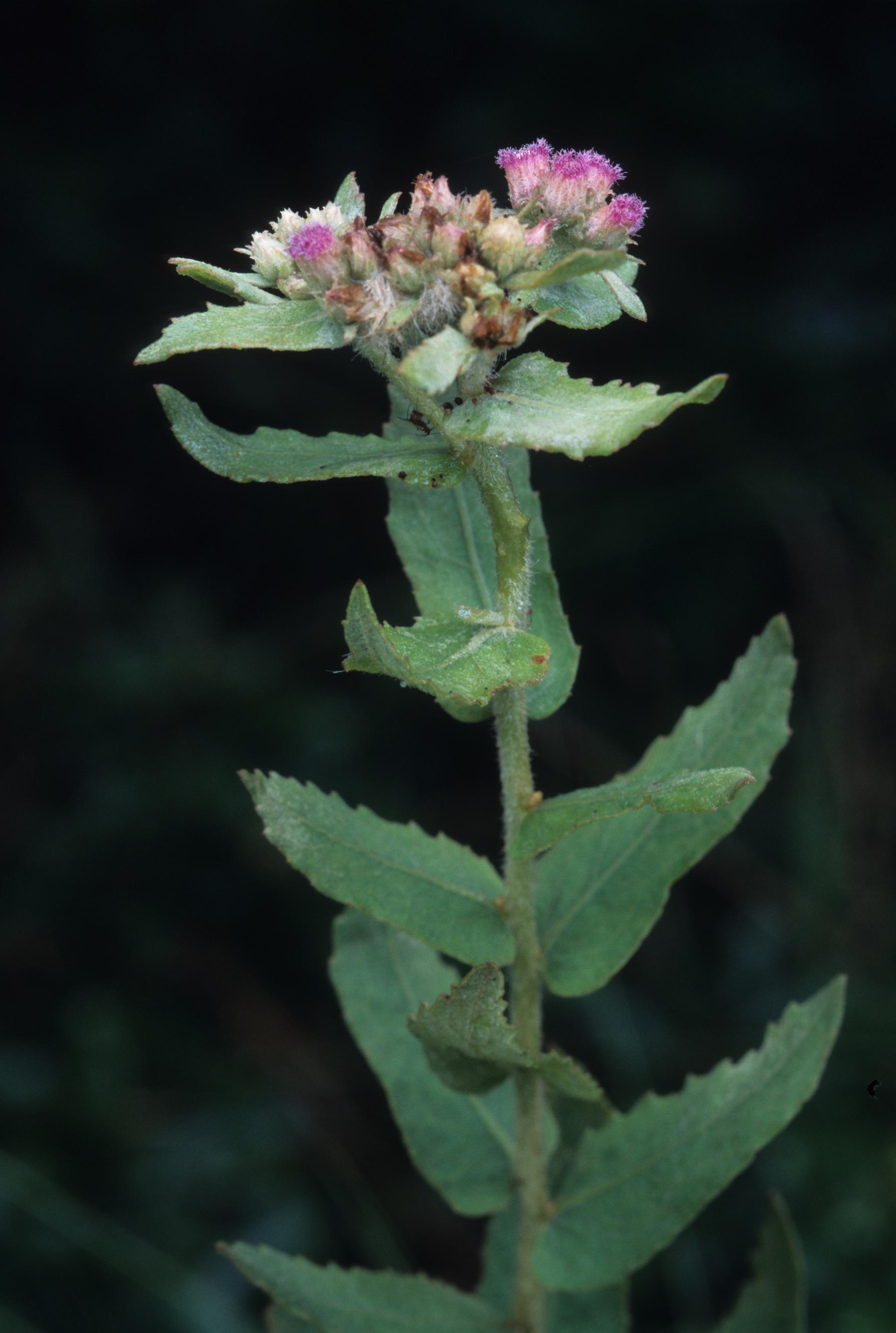Difference between revisions of "Pluchea rosea"
KatieMccoy (talk | contribs) |
(→Description) |
||
| Line 22: | Line 22: | ||
==Description== | ==Description== | ||
<!-- Basic life history facts such as annual/perrenial, monoecious/dioecious, root morphology, seed type, etc. --> | <!-- Basic life history facts such as annual/perrenial, monoecious/dioecious, root morphology, seed type, etc. --> | ||
| + | "Perennial or annual, erect herbs, stems erect, densely short pubescent, terete to obscurely angled, strict to freely branched. Leaves alternate, serrate, the teeth-callous-thickened, petiolate to sessile. Heads corymbose. Involucres hemispheric to campanulate, many flowered; bracts imbricate, in several series. Flowers all discoid, perfect, very small. Nutlets small, cylindric, 5-ribbed; pappus bristles whitish, capillary, minutely, antrosely barbed, 3-4 mm long." - Radford et al 1964 | ||
| + | |||
| + | "Pubescent perennial, 4-11 dm tall, usually strict. Leaves oblong to elliptic-oblong, 3-9 cm long, 1.3-5 cm wide, obtuse to acute, auriculate-clasping sessile. Heads sessile or essentially so in glomerules in compact corymbs, the lateral branches usually overtopping the central. Involucres 3-6 mm long; bracts acute. Corollas pink. Nutlets black, 0.5-1 mm long, densely pubescent." - Radford et al 1964 | ||
==Distribution== | ==Distribution== | ||
Revision as of 20:23, 8 February 2016
| Pluchea rosea | |
|---|---|

| |
| Photo taken by Gil Nelson | |
| Scientific classification | |
| Kingdom: | Plantae |
| Division: | Magnoliophyta - Flowering plants |
| Class: | Magnoliopsida – Dicotyledons |
| Order: | Asterales |
| Family: | Asteraceae |
| Genus: | Pluchea |
| Species: | P. rosea |
| Binomial name | |
| Pluchea rosea Godfrey | |

| |
| Natural range of Pluchea rosea from USDA NRCS Plants Database. | |
Common name: Rosy camphorweed
Contents
Taxonomic notes
Description
"Perennial or annual, erect herbs, stems erect, densely short pubescent, terete to obscurely angled, strict to freely branched. Leaves alternate, serrate, the teeth-callous-thickened, petiolate to sessile. Heads corymbose. Involucres hemispheric to campanulate, many flowered; bracts imbricate, in several series. Flowers all discoid, perfect, very small. Nutlets small, cylindric, 5-ribbed; pappus bristles whitish, capillary, minutely, antrosely barbed, 3-4 mm long." - Radford et al 1964
"Pubescent perennial, 4-11 dm tall, usually strict. Leaves oblong to elliptic-oblong, 3-9 cm long, 1.3-5 cm wide, obtuse to acute, auriculate-clasping sessile. Heads sessile or essentially so in glomerules in compact corymbs, the lateral branches usually overtopping the central. Involucres 3-6 mm long; bracts acute. Corollas pink. Nutlets black, 0.5-1 mm long, densely pubescent." - Radford et al 1964
Distribution
Ecology
Habitat
Phenology
Seed dispersal
Seed bank and germination
Fire ecology
Pollination
Mark Deyrup at Archbold Biological Station observed these Hymenoptera species on Pluchea rosea:
Halictidae: Dieunomia heteropoda
Leucospididae: Leucospis robertsoni, L. slossonae
Megachilidae: Megachile albitarsis, M. brevis pseudobrevis
Pompilidae: Anoplius marginalis
Sphecidae: Bicyrtes capnoptera, B. insidiatrix, B. quadrifasciata, Cerceris bicornuta, C. blakei, C. fumipennis, C. rufopicta, Ectemnius rufipes ais, Isodontia exornata, Microbembex monodonta, Philanthus ventilabris, Prionyx thomae, Sphex ichneumoneus, Tachysphex similis, Tachytes pepticus, T. validus
Vespidae: Eumenes smithii, Euodynerus castigatus rubrivestris, E. hidalgo, Pachodynerus erynnis, Parancistrocerus fulvipes rufovestris, P. perennis anacardivora, P. salcularis rufulus, Polistes bellicosus, P. fuscatus, Stenodynerus fundatiformis, Zethus slossonae, Z. spinipes
Use by animals
Diseases and parasites
Conservation and Management
Cultivation and restoration
Photo Gallery
References and notes
Deyrup, M.A. and N.D. 2015. Database of observations of Hymenoptera visitations to flowers of plants on Archbold Biological Station, Florida, USA.